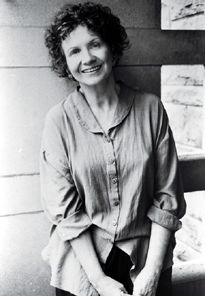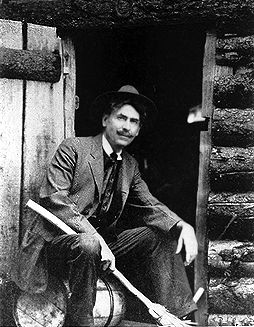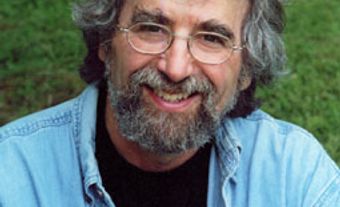Short Fiction in English
Short fiction in English encompasses a wide range of forms, including the ESSAY, sketch and short story; and elements of all these forms may blend in individual works, as in "The Village Inside" and "Predictions of Ice" from Hugh HOOD'SAround the Mountain: Scenes from Montreal Life (1967). Such questions of form tantalize writers and readers. Hugh MACLENNAN, for example, has composed nearly 400 essays and only one short story ("An Orange from Portugal," which he later called an essay) yet has remarked that "The secret of writing a successful personal essay ... is to turn it into a short story."
There are other ways of classifying short fiction - the most time-honoured category, in which Canadian writers like Ernest Thompson SETON and Charles G.D. ROBERTS have made major contributions, being the animal story. Another category, in which Gregory CLARK, Morley CALLAGHAN, Hugh Hood, Mordecai RICHLER, W.P. KINSELLA and George BOWERING have excelled, is the sports story.
A third category is the writer's story, in which authors momentarily unmask themselves as they examine their lives as writers, and sometimes even question the purposes of their fiction. The number of such subgenres is great and includes initiation stories, war stories, mystery, science-fiction and adventure stories, humorous stories, ethnic stories, etc.
Canadian short fiction has always maintained close associations with the popular markets provided by newspapers and LITERARY MAGAZINES. A pattern of first publication in periodicals and subsequent collection in book form was established in the 19th century and has continued to the present day. It began with Thomas MCCULLOCH, whose "Letters of Mephibosheth Stepsure" was first published in the Acadian Recorder, 1821-23, but was not collected in book form until 1862. Satirist Thomas Chandler HALIBURTON'S"The Clockmaker" was first published in Joseph HOWE'SNovascotian in 1835-36, then expanded into book form in 1836, with sequels in 1838 and 1840. In total, Haliburton published 10 collections of sketches. Portions of Susanna MOODIE'SROUGHING IT IN THE BUSH were first published in The Literary Garland before appearing in book form in 1852. Stephen LEACOCK published SUNSHINE SKETCHES OF A LITTLE TOWN in The Montreal Daily Star (Feb-June 1912), then as a book later the same year.
Since the 1920s the connections between short fiction and newspapers or magazines have remained strong, as seen in the publication of work by Raymond KNISTER, Morley Callaghan, Mavis GALLANT, Alice MUNRO, Hugh Hood, Jack HODGINS and Leon ROOKE in periodicals as diverse as This Quarter, Toronto Star Weekly, TheTAMARACK REVIEW, The Malahat Review, Canadian Fiction Magazine, Journal of Canadian Fiction and The New Yorker. Several writers have also edited newspapers, magazines or anthologies.
Sketches
Critics Carole Gerson and Kathy Mezei define the sketch as "an apparently personal anecdote or memoir which focuses on one particular place, person, or experience, and is usually intended for magazine publication." Its colloquial tone and informal structure relate it to the epistolary form employed in several early Canadian works. One common kind is the humorous or satirical sketch, as found in the works of McCulloch, Haliburton and Leacock. A second kind is the autobiographical, descriptive or travel sketch, as practised by Howe, William "Tiger"DUNLOP, Catharine Parr TRAILL, Anna Jameson, Archibald LAMPMAN, William Wilfred CAMPBELL, Duncan Campbell SCOTT, Sara Jeannette DUNCAN and Frederick Philip GROVE. Raymond Knister's country sketches about Corncob Corners represent a third kind of sketch.
The sketch had slipped into the shadow of the short story by the late 1920s, although it has continued in the works of several humorists, including Paul HIEBERT (SARAH BINKS, 1947), Robertson DAVIES (The Diary of Samuel Marchbanks, 1947, The Table Talk of Samuel Marchbanks, 1949, Samuel Marchbanks' Almanack, 1967, and the omnibus The Papers of Samuel Marchbanks, 1985) and Earle BIRNEY (Big Bird in the Bush, 1978), as well as in such AUTOBIOGRAPHICAL WRITING as Emily CARR'SKLEE WYCK (1941) and Mordecai Richler's The Street (1969). Hood's Around the Mountain is an important late-20th-century contribution to the history of the sketch in Canada.
Animal Stories
The most distinctive early contribution by Canadians to short fiction was the animal stories of Seton and Roberts. According to critic Alec Lucas, Seton's first book, WILD ANIMALS I HAVE KNOWN (1898), "established ... the realistic animal story." Roberts's first full collection was The Kindred of the Wild (1902). The Canadian tradition of the animal story has continued to thrive, not only in the nonfictional and fictional prose writing of naturalists and storytellers Roderick HAIG-BROWN, Fred BODSWORTH, Sheila BURNFORD and Farley MOWAT, but also in the highly literary, formally conceived short fiction of Dave GODFREY (Death Goes Better with Coca-Cola, 1967).
Scott, Callaghan, Wilson, Gallant and their Successors
In the introduction to his pioneer anthology Canadian Short Stories (1928), Raymond Knister writes of the "unobtrusive influence" of D.C. Scott's story cycle In the Village of Viger (1896) and praises it as "a perfect flowering of art." Subsequent critics, such as Stan Dragland, have supported Knister's view. In the Village of Viger was followed by The Witching of Elspie (1923) and The Circle of Affection (1947). Scott's work looks back to 19th-century American gothic and romantic and local-colour writing, yet its ironic tone connects it with mid-20th-century writing, and his use of imagery anticipates the poetically conceived short stories written later in the century. Moreover, as a unit, In the Village of Viger is a foundation stone in the Canadian tradition of the story cycle.
In editor Robert WEAVER'S view, Morley Callaghan was "the first and most important of the modern short-story writers in Canada." Callaghan was also a significant influence on writers such as Norman LEVINE, whose first book of stories, One Way Ticket, was published in 1961, and Hugh Hood, whose first book of stories, Flying a Red Kite, appeared in 1962. Callaghan's early books of short fiction were A Native Argosy (1929), the novella No Man's Meat (1931) and Now That April's Here and Other Stories (1936). Most of these stories were collected, with a number of more recent ones, in Morley Callaghan's ](1959). No Man's Meat & the Enchanted Pimp (1978) contains a slightly revised version of his 1931 novella and a new novella. Other old stories were collected in The Lost and Found Stories of Morley Callaghan (1985). Callaghan's stories were important for his choices of subject and situation; his modern, urban, even international outlook; his understanding of the importance and the difficulty of writing about everyday life; and the intimately human moral complexities that he explored. Furthermore, as poet Margaret AVISON has observed, the stories created a strong feeling of immediacy because of his special and new way of using words plainly. Perhaps even more important to the succeeding generation of writers was the reputation that Callaghan had made for himself.
Callaghan did not establish a standard of stylistic elegance. That achievement belonged to Ethel WILSON. Two novellas by Wilson, "Tuesday and Wednesday" and "Lilly's Story," were published as The Equations of Love (1952); some of her short stories, first published in magazines, appeared in Mrs. Golightly and Other Stories (1961); and further stories were collected posthumously in Ethel Wilson: Stories, Essays, and Letters (1987). Wilson's fiction - novels, novellas and short stories - significantly influenced Canadian writers from the late 1940s to the early 1960s, including Margaret LAURENCE and Alice Munro, both major contributors to the history of short fiction in Canada. Laurence's first book of stories, The Tomorrow-Tamer and Other Stories, was published in 1963. Her story cycle A Bird in the House (1970), stands with Scott's In the Village of Viger, Leacock's Sunshine Sketches of a Little Town and Hood's Around the Mountain as major benchmarks for subsequent creators of story cycles (or sketchbooks) in Canada. Munro's first book of stories, Dance of the Happy Shades (1968), contained the best of her work from nearly 2 decades. By the 1980s, Munro had the best popular and international reputation of Canadian short story writers. She emerged as the writer most often identified with the rebirth of the Canadian short story, and as the writer most prominently concerned with trying to shape short stories into coherent books or story cycles - notably in Who Do You Think You Are? (1978).
The most truly international of Canadian short-story writers, however, are Mavis Gallant and Clark BLAISE. Gallant's The Other Paris (1956), My Heart Is Broken (1964), The Pegnitz Junction (1973), The End of the World and Other Stories (1974), From the Fifteenth District (1979), Home Truths (1981) and Overhead in a Balloon: Stories of Paris (1985) brought a more intricate internationalism, a richly textured political awareness and exquisite craft to Canadian short fiction. These remarkable features also characterized the work of Clark Blaise, in A North American Education (1973), Tribal Justice (1974) and Resident Alien (1986).
Leon Rooke and Hugh Hood
Leon Rooke published Last One Home Sleeps in the Yellow Bed (1968) in the US before moving to Canada, and numerous books of his fiction have subsequently appeared in both countries. His achievement, as Blaise and John METCALF have recognized, lies in his mastery of voices, tones and especially language - from Rooke's native American South back to Renaissance England and ahead to contemporary times. This mastery, amply demonstrated in his seventh and eighth volumes of short fiction, Sing Me No Love Songs I'll Say You No Prayers (1984) and A Bolt of White Cloth (1984), sets Rooke in a class almost by himself - with the exception of Hugh Hood.
Hood's subtle explorations of the possibilities of language and form began with the publication of Flying a Red Kite and Around the Mountain, then continued in The Fruit Man, The Meat Man & The Manager (1971) and Dark Glasses (1976). His fifth and sixth collections of new work, None Genuine Without This Signature (1980) and August Nights (1985), further exemplify the union of language, feeling and form. "The Woodcutter's Third Son" is a quietly dazzling treatment of the conflicting implications for human character of magical folklore and sacred scripture. "Every Piece Different" represents a moving personal testament and an important declaration of the writer's continued commitment to "making it new."
Experimental Writing
A number of writers of short fiction have created works that, in the words of critic W.H. New, "strive for the expression of a total linguistic gesture: the restructuring of the world in the mind of the writer/reader." As examples New cites Malcolm LOWRY'SHear Us O Lord from Heaven Thy Dwelling Place (1961), George Elliott's The Kissing Man (1962), Godfrey's Death Goes Better with Coca-Cola, Ray Smith's audacious collection Cape Breton is the Thought-Control Centre of Canada (1969) and Blaise's A North American Education. Smith's Cape Breton has been followed by 2 verbally and structurally and psychologically exciting books, Lord Nelson Tavern (1974) and Century (1986). Godfrey's Death Goes Better was also followed by 2 extraordinary volumes, I Ching Kanada (1976) and Dark Must Yield (1978). Other interesting experimental works published since the 1960s include Lawrence Garber's Garber's Tales from the Quarter (1969) and Circuit (1970); Matt COHEN'SColumbus and the Fat Lady and Other Stories (1972), Night Flights (1978), The Expatriate (1982) and Café Le Dog (1983); Terrence Heath's the truth & other stories (1972); Gwendolyn MACEWEN'SNoman (1972) and Noman's Land (1985); Andreas Schroeder's The Late Man (1972); George Bowering's Flycatcher & Other Stories (1974), Protective Footwear: Stories and Fables (1978) and A Place to Die (1983); John GLASSCO'SThe Fatal Woman (1974); Rudy WIEBE'SWhere Is the Voice Coming From? (1974), Alberta/A Celebration (1979) and The Angel of the Tar Sands and Other Stories (1982); bp NICHOL'SCraft Dinner (1978); Sheila WATSON'S Four Stories (1979), expanded to Five Stories (1984); David Arnason's Fifty Stories and a Piece of Advice (1982) and The Circus Performer's Bar (1984); Margaret ATWOOD'SMurder in the Dark (1983); Phyllis GOTLIEB'S Son of the Morning and Other Stories (1983); Stan Dragland's Journey Through Bookland and Other Passages (1984); and Robin SKELTON'SThe Man Who Sang in His Sleep (1984) and Telling the Tale (1987).
Continuing Concerns and Evolving Forms
Short fiction has many forms and purposes, yet trends exist. Jack Hodgins (Spit Delaney's Island: Selected Stories, 1976, and The Barclay Family Theatre, 1981) writes, in part, to challenge "a reader's concept of reality." Like Hugh Hood, Leon Rooke and John Metcalf (from The Lady Who Sold Furniture, 1970, through Adult Entertainment, 1986), Hodgins believes that writers must recognize the moral implications of their work. Nevertheless, there are major differences between these writers and earlier moral realists such as Grove, Callaghan, Sinclair ROSS, W.O. MITCHELL, Ernest BUCKLER and Margaret Laurence. As John Metcalf states in "Editing the Best" (Kicking Against the Pricks, 1982), "Where twenty years ago Canadian stories stressed content - what a story was about - the main emphasis now is on the story as verbal and rhetorical performance. " These differences can be perceived in the evolution of some writers' conceptions of the short story. Munro's stories, for example, move from her early narrative style towards a freer, more open, more dreamlike form evident in such collections as The Moons of Jupiter (1982) and The Progress of Love (1986). This movement is true also of the development of Canadian short-story writing in general.
New Directions
Hood's "The Woodcutter's Third Son," from None Genuine Without This Signature, the title story of Rooke's The Birth Control King of the Upper Volta (1982) and Metcalf's "Gentle as Flowers Make the Stones," from The Teeth of My Father (1975), represent 3 important directions that late-20th-century Canadian short fiction is taking: towards allegory of the human spirit, fantasy and poetic expression. The allegorical quality of Hood's writing is also evident, to varying degrees, in works by Rooke, Blaise, Hodgins, Terence Byrnes, Guy VANDERHAEGHE and Peter Behrens. The fantastic character of Rooke's stories can be found as well, again to varying degrees, in the writing of H.R. Percy, Elliott, Hood, MacEwen, Schroeder, Wiebe, Margaret Gibson, Hodgins, Seàn Virgo, Atwood and Carol SHIELDS. The poetic quality which is a mark of Metcalf's writing is apparent also in the structural and emblematic keys to stories by many of Metcalf's finest contemporaries. All 3 directions are represented in the opening paragraph of W.P. Kinsella's elegy for rock singer Janis Joplin, "First Names and Empty Pockets," from Shoeless Joe Jackson Comes to Iowa (1980).
Reputations
Canadian writers of short fiction, like authors in other genres, are subject to fluctuations in popularity. As personal likes shift back and forth between plain style and verbal play or between realism and fantasy, individual writers' reputations rise and fall accordingly - regardless of their work's quality. Furthermore, attention is rarely given to a writer's literary development, to a writer's changing views of the form of the short story.
The most unfairly neglected authors are the border crossers: the new Canadians (including Elizabeth Spencer, Eugene MacNamara, Leon Rooke, Jane RULE, Audrey THOMAS, Kent Thompson, John Metcalf and Daphne MARLATT) and the so-called expatriates (including Wallace Stegner, Mavis Gallant, for many years Norman Levine, and now Clark Blaise) - writers who have made significant contributions to Canada's literary traditions but are generally regarded as not fully belonging to them. However, several deserving authors of recently published stories, novellas or short fiction collections are gaining fine reputations. Among these writers are the 8 who participated in the "New Canadian Fiction/New Canadian Criticism" conference organized in their honour by David HELWIG and John Metcalf in Kingston, Ont, 4-6 October 1986: Edna Alford, Keath Fraser, Douglas Glover, Dayv James-Frenche, Janice Kulyk Keefer, Rohinton MISTRY, Patrick Roscoe and Linda Svendsen. It is to be hoped that they, together with other talented newcomers, will have the breadth of vision, the determination, the energy and the good fortune to contribute significantly to the tradition of short fiction in Canada.
See alsoSHORT FICTION IN ENGLISH 1985-2012; LITERATURE IN ENGLISH.

 Share on Facebook
Share on Facebook Share on X
Share on X Share by Email
Share by Email Share on Google Classroom
Share on Google Classroom





